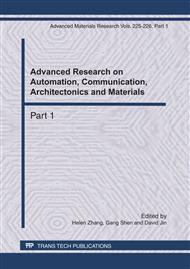p.411
p.417
p.422
p.428
p.433
p.437
p.442
p.449
p.453
Heart Sound Recognition - A Prospective Candidate for Biometric Identification
Abstract:
Based on principles of human heart auscultation and the associated signal processing technology, we designed and manufactured "a double-header two-way voice auscultation detection device". The paper introduced a special human feature extraction method which is based on improved circle convolution (ICC) slicing algorithm combined with independent sub-band function (ISF). Follow we adopt a fire-new classification technology namely s1 and s2 model which is through two recognition steps to get different human’s heart sound features to assure validity, and then use similarity distance to carry out human heart sound pattern matching. The method was verified using 10 recorded heart sounds. The results show that identification accuracy is 85.7% in the two-step mode, and the error acceptance rate is less than 7%,and refusing error rate is less than 10% for normal people.
Info:
Periodical:
Pages:
433-436
Citation:
Online since:
April 2011
Authors:
Price:
Сopyright:
© 2011 Trans Tech Publications Ltd. All Rights Reserved
Share:
Citation:


